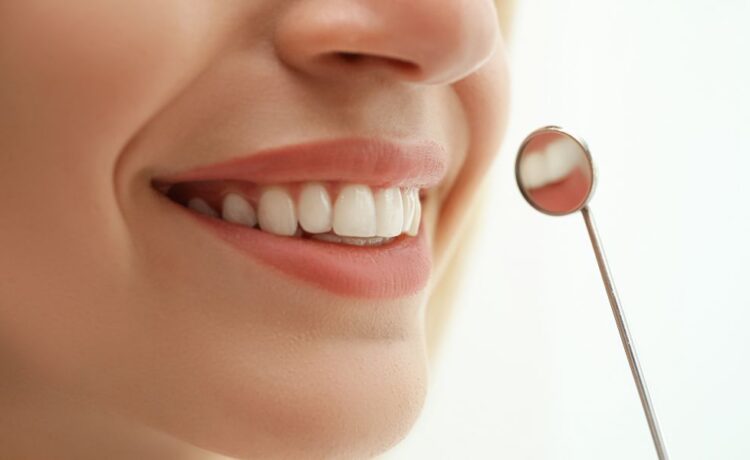The field of cosmetic dentistry has undergone a remarkable transformation over the past few decades, revolutionizing the way dentists restore and enhance the beauty of patients’ smiles. From its humble beginnings with tooth bonding and veneers to the cutting-edge technologies of today, cosmetic dentistry has evolved significantly, driven by advancements in materials, techniques, and digital technologies. With the rise of celebrity culture and social media, the demand for perfect smiles has skyrocketed, fueling innovation and pushing the boundaries of what is possible.
Through this article the dentist in Ponte Vedra Beach, FL explores the fascinating evolution of cosmetic dentistry, highlighting key trends and advancements that have shaped the industry, from dental implants and digital smile design to minimally invasive procedures and biocompatible materials.
Understanding cosmetic dentistry
Cosmetic dentistry refers to the branch of dentistry focused on enhancing the aesthetic appearance of teeth and gums, combining art and science to create beautiful, healthy-looking smiles. This specialized field encompasses a range of procedures and techniques aimed at improving the color, shape, size, alignment, and overall visual appeal of teeth, as well as addressing issues such as tooth loss, gum recession, and bite irregularities.
Cosmetic dentistry includes various treatments, including teeth whitening, veneers, dental implants, bonding, contouring, and smile design, all designed to restore confidence, self-esteem, and overall oral well-being.
Exploring trends and advancements in cosmetic dentistry
Cosmetic dentistry has evolved tremendously over the recent decades. Here is how this aesthetic dental branch has evolved over the years:

Early Beginnings: 1960s-1980s
Cosmetic dentistry’s roots date back to the 1960s when dentists began experimenting with tooth bonding and veneers. These early techniques laid the groundwork for modern cosmetic dentistry. The 1980s saw the introduction of composite resin materials, which allowed for more durable and aesthetically pleasing restorations.
The Advent of Dental Implants: 1990s
Dental implants, introduced in the 1990s, transformed the field of cosmetic dentistry. These titanium posts replaced missing teeth, providing a secure, long-lasting solution for patients. Implant technology has continued to evolve, with advancements in materials, placement techniques, and digital planning.
Digital Dentistry: 2000s
The 2000s witnessed the dawn of digital dentistry. Computer-aided design (CAD) and computer-aided manufacturing (CAM) technologies enabled precise, efficient restorations. Digital impressions and 3D printing further streamlined the process, reducing treatment times and improving accuracy.
Modern trends and advancements
Today, cosmetic dentistry continues to evolve, driven by innovative materials, technologies, and techniques:
- Digital Smile Design: Advanced software allows dentists to create virtual smile simulations, ensuring precise planning and predictable outcomes.
- Minimally Invasive Procedures: Techniques like laser dentistry and micro-invasive preparations reduce trauma and recovery times.
- Biocompatible Materials: Ceramic and composite materials mimic natural tooth structure, ensuring durability and aesthetics.
- 3D Printing: Rapid prototyping enables same-day restorations and customized appliances.
- Robot-Assisted Dentistry: Next-generation robotics enhance precision and efficiency in implant placement and restoration.
The rise of celebrity smiles
The influence of celebrity culture has contributed to the growing demand for cosmetic dentistry. Social media platforms showcase perfect smiles, fueling the desire for similar results. Dentists now incorporate “smile design” principles, considering facial aesthetics and personality when crafting custom smiles.
Patient-centric care
The modern cosmetic dentistry experience prioritizes patient comfort, convenience, and education:
- Sedation Dentistry: Relaxation options ensure anxiety-free treatment.
- Personalized Treatment Plans: Dentists tailor care to individual needs and goals.
- Advanced Diagnostic Tools: Cone beam computed tomography (CBCT) and intraoral scanners enhance accuracy.
Future directions
As technology continues to advance, we can expect:
- Artificial Intelligence (AI): AI-assisted diagnosis and treatment planning.
- Nanotechnology: Enhanced material properties and bioactive surfaces.
- Regenerative Dentistry: Tissue engineering and stem cell therapies for tooth replacement.
The evolution of cosmetic dentistry has transformed the field, offering patients unparalleled opportunities for smile enhancement. As technology continues to advance, dentists must stay abreast of trends and advancements to deliver exceptional patient care. With a focus on patient-centric care, minimally invasive techniques, and cutting-edge materials, cosmetic dentistry will continue to shape the future of oral healthcare.









